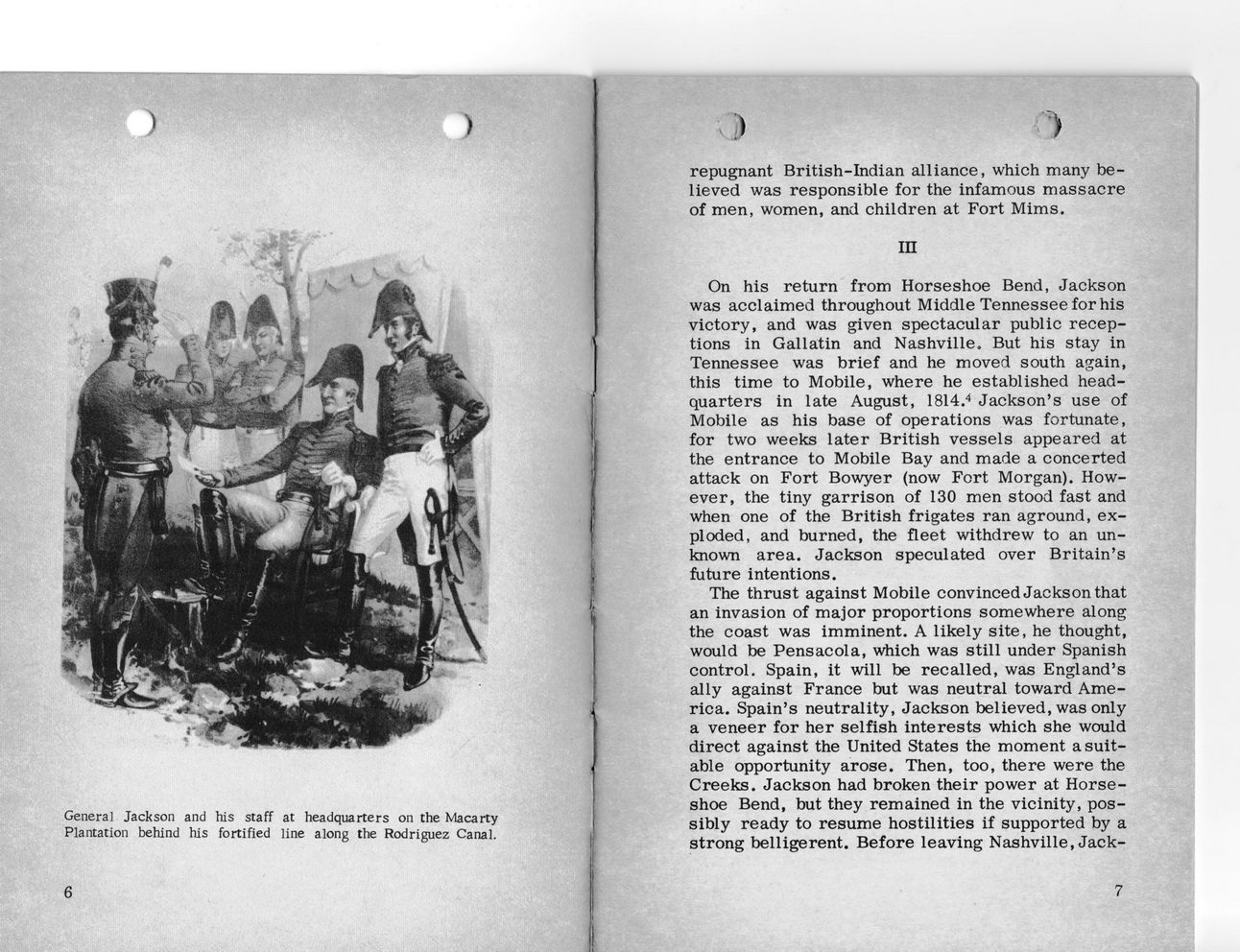This text was obtained via automated optical character recognition.
It has not been edited and may therefore contain several errors.
General Jackson and his staff at headquarters on the Macarty Plantation behind his fortified line along the Rodriguez Canal. 6 > ) repugnant British-Indian alliance, which many believed was responsible for the infamous massacre of men, women, and children at Fort Mims. in On his return from Horseshoe Bend, Jackson was acclaimed throughout Middle Tennessee for his victory, and was given spectacular public receptions in Gallatin and Nashville. But his stay in Tennessee was brief and he moved south again, this time to Mobile, where he established headquarters in late August, 1814.4 Jackson?s use of Mobile as his base of operations was fortunate, for two weeks later British vessels appeared at the entrance to Mobile Bay and made a concerted attack on Fort Bowyer (now Fort Morgan). However, the tiny garrison of 130 men stood fast and when one of the British frigates ran aground, exploded, and burned, the fleet withdrew to an unknown area. Jackson speculated over Britain?s future intentions. The thrust against Mobile convinced Jacks on that an invasion of major proportions somewhere along the coast was imminent. A likely site, he thought, would be Pensacola, which was still under Spanish control. Spain, it will be recalled, was England?s ally against France but was neutral toward America. Spain?s neutrality, Jackson believed, was only a veneer for her selfish interests which she would direct against the United States the moment a suitable opportunity arose. Then, too, there were the Creeks. Jackson had broken their power at Horseshoe Bend, but they remained in the vicinity, possibly ready to resume hostilities if supported by a strong belligerent. Before leaving Nashville, Jack- 7

Battle of 1814 P7